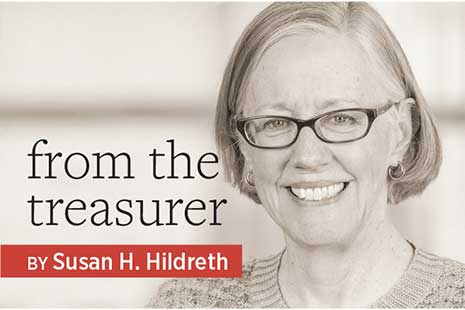
This is my first column as ALA treasurer, and my goal during my term in office is to make sure our membership has a clear understanding of where ALA is financially and that we strategically use the Association’s resources to support programmatic priorities.
For fiscal year 2016, which just closed, I am glad that ALA came very close to its budget, with operating revenues of $50,815,693 and operating expenses of $51,259,221. It was a rather challenging year. We include a number of activities for our revenue: publishing ($11,705,837), Annual and Midwinter meetings ($5,564,072 and $2,785,904, respectively), membership ($5,515,846), division activities ($15,810,609), grants ($6,329,463), round table activities ($434,927), and investment income from the endowment and short-term cash investments ($936,052).
Within this overall budget, revenue sources varied somewhat from original projections. ALA publishing revenue was $1,193,513 (or approximately 9%) lower than original projections, as were the Annual and Midwinter conference revenue variances of $720,403 and $220,646 (11% and 7%, respectively). Within the general fund, these lower-than-projected revenues were partially offset by $1,164,139 lower expenses than budgeted. Grants were $1,468,200 higher than projected, as was revenue generated by the divisions ($155,413 greater than budget). Division expenses were also $1,400,738 lower than budget.
Given the final revenue results for publishing, ALA management took a close look at the initial projections for the 2017 fiscal year, which began September 1. Ultimately, the ALA Executive Board approved a final 2017 budget that included a $500,000 decrease of publishing revenue projections that were matched by expense reductions in publishing and the other ALA offices. This revised budget also included investments that will help grow publishing revenue in the future. Also included in the budget is the increased support for investments in technology, with major systems such as the new ALA e-commerce and e-learning site scheduled to roll out this year. As treasurer, I will be working closely with the ALA executive director, the chief financial officer, and the finance staff to monitor our revenue and expenses over the coming year.
For this reason, one of the most important things that informed members know is that for every dollar ALA collects in member dues, another $5 is generated through publishing, conferences, grants, and endowment support. This means ALA is much stronger than it could ever be if it were solely dependent on member dues, and it makes our advocacy, information policy, and professional leadership development programs much, much stronger. Every one of those ALA dollars works very hard for us as members, for libraries, and for the public we serve.
Overall, ALA continues to maintain a healthy balance of assets—including the endowment—and liabilities. This financial soundness and the ALA endowment are important for the long-term stability and sustainability of the Association. We expect to be around for many years to come as we face a future that continues to be full of opportunities and challenges for libraries. We are in it for the long run.
I look forward to reporting back to the membership on a regular basis about financial issues that affect the Association, and I invite you to visit the treasurer’s page for more detailed information on the 2016 results, the 2017 budget, and other financial information.


